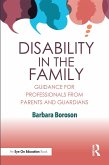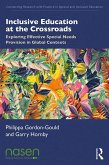This important book explores the diversity of student experiences, addressing both compulsory schools and vocational education, and examines how different Nordic countries conceptualise and approach support and SNE for immigrant students. Readers will get an opportunity to read various studies that address gaps in the realisation of inclusion and special need education. This book initiates a dialogue on generating new knowledge, approaches, and methods to expand the flexibility necessary to implement a fully inclusive education. The book offers research that includes strong theoretical and practical frameworks, interviews, interventions, assessments, case studies as well as offers future directions for inclusive and special needs education.
By exploring the process of inclusion and special needs education in the Nordic countries, this book is an essential read for those who intend to deepen their understanding and to enact inclusion, and the development of special needs education for immigrant students.
Chapter 3 of this book is freely available as a downloadable Open Access PDF at http://www.taylorfrancis.com under a Creative Commons [Attribution-Non Commercial-No Derivatives (CC-BY-NC-ND)] 4.0 license.
Dieser Download kann aus rechtlichen Gründen nur mit Rechnungsadresse in A, B, BG, CY, CZ, D, DK, EW, E, FIN, F, GR, HR, H, IRL, I, LT, L, LR, M, NL, PL, P, R, S, SLO, SK ausgeliefert werden.
Professor Sivanes Phillipson Ph.D., Chair and Professor of Education, School of Social Sciences, Media, Film and Education, Swinburne University of Technology
'This timely volume provides current, research-informed portraits of inclusive education for immigrant children and students across different grade levels, instructional settings and areas of challenge. Each chapter resonates with the voices of multilingual students and puts forth school-based practices and system level policies that provide a road map towards removing barriers and optimizing the educational experiences for and the wellbeing of these students. Researchers, policy-makers and practitioners will welcome this very informative guide.'
Cristina Sánchez-López, Paridad Education Consulting and DePaul University, Chicago









